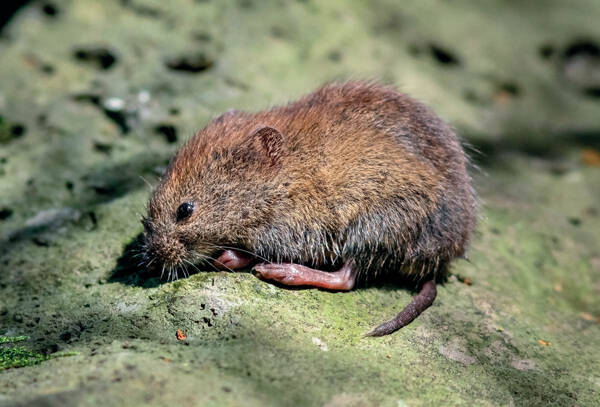Microtus fortis
IUCN
LCBasic Information
Scientific classification
- name:Microtus fortis
- Scientific Name:Microtus fortis,Reed Vole,Swamp vole, Far Eastern vole, Giant vole
- Outline:Rodents
- Family:Rodentia Cricetidae Microtus
Vital signs
- length:120-139mm
- Weight:About 56.29 grams
- lifetime:
Feature
The individual is large and is one of the largest individuals in the genus vole.
Distribution and Habitat
This species is widely distributed in China, with two main distribution areas: one is in the middle and lower reaches of the Yangtze River plain, including Hubei, Hunan, Jiangxi, Jiangsu, Anhui, Zhejiang, Shanghai, Fujian, etc.; the other distribution area is in the northeast region, including Heilongjiang, Liaoning, Jilin, northeastern Inner Mongolia, and also in Shaanxi. Abroad, it is distributed in Russia and the Korean Peninsula.
Oriental voles mainly live in low-lying swamps and meadows at 1000-1500 meters, and choose weeds and reeds along the banks of ponds, streams, rivers, and lakes as their habitats.
Appearance
The average adult body length is 125mm (120-139mm). The tail is more than 1/3 of the body length, averaging more than 50mm (45-65mm). The ears are exposed outside the fur. The back of the body is yellow-brown or brown, and the belly is grayish white. The tail is two-colored, dark brown on the back and grayish white on the belly. The first lower molar has 5 closed triangles, and the third upper molar has 3 horn processes on the inside and outside.
Details
The oriental vole is a typical burrowing type. It does not hibernate and moves out of its burrows day and night. Due to its frequent activities and frequent trips between several groups of burrows, very obvious runways are often formed on the ground. Especially in moss and reed fields, the runways are crisscrossed and densely covered like a net. There are seasonal differences in the rhythm of diurnal activities. In summer, the activity at night is higher than that during the day, and before dawn is higher than that at dusk. The mouse is fat and has short legs. It moves clumsily than other mice. Although it can escape quickly in the grass, it is not good at climbing. It has strong swimming and diving abilities.

The Eastern Vole usually builds its caves under reeds and weeds, in fields and on ridges. The caves it inhabits are complex and have many entrances. Generally, there are about 4 to 8 entrances, the most are 21, and there are also some with only one entrance. The entrance is round, with a diameter of about 4 to 7 cm. There are mouse nests in the cave, ranging from 1 to 3 to 5 or even more. The inner diameter of the nest is about 8 to 16 cm and the height is about 12 cm. The nest's inner cushion materials include reeds, grass roots, leaves, bamboo, rice straw, wheat straw, etc. The depth of the mouse's nest from the ground is generally 5~30cm, and its depth is often closely related to the looseness of the soil and the height of the groundwater level. When the weather is cold, the moisture in the moist soil decreases, and the oriental voles dig open holes on the ground. The open holes have warehouses and mouse nests, and then they are rebuilt and expanded into dark holes. Most temporary shelter holes are simple in structure on the ridges of the fields. They are single pipes with some bends. They are not expanded into nests and have no inner cushion materials.
The oriental voles feed on the stems, leaves, roots, seeds and bark of plants, and seeds are the most popular. Plants include reeds, water bamboo, small bamboo, sedge, wheat grass, oat grass, hairy goose crown grass, Xiaokang grass, narrow-leaved wormwood, buckwheat, rapeseed, beans, etc. In addition, they also eat insects and may also eat small rodents.
The natural enemies of the Oriental vole include small and medium-sized carnivores, and birds of prey include black-eared kites, white-tailed harriers, and kestrels. There are also snakes here.
The Oriental vole has a strong reproductive capacity. The number of pups per litter is generally 4 to 5, and the number can reach 13 or 14.
The oriental vole is an important pest of agriculture and forestry. It migrates to the fields during the crop maturity period, steals crops in large quantities, and also destroys trees. It is also a natural host of Japanese encephalitis and leptospirosis pathogens.
Listed in the 2008 Red List of Endangered Species of the World Conservation Union (IUCN) ver 3.1 - Least Concern (LC).








